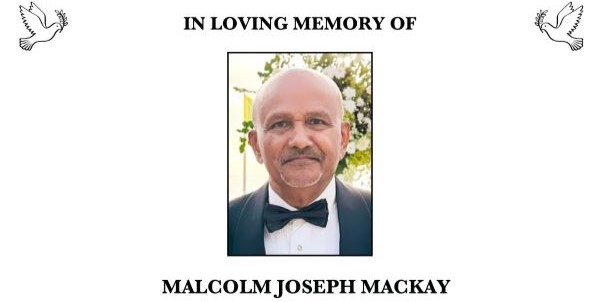OLD REST HOUSES OF THE JAFFNA PENINSULA-by HUGH KARUNANAYAKE

Source:Island
Rest houses were the pioneering institutions associated with the hospitality industry in Ceylon of the period between the 18th and 20th Centuries. Readers may be surprised to note that “Rest House” is an institution found only in Sri Lanka. The name seems to be derived from the Dutch term Rust Huys which was the appellation in use when they were originally established during the days of Dutch rule over the island’s maritime provinces. They were originally used as inns or hostelry for the use of the Governor or leading government officials when visiting local areas when there were neither hotels nor proper roads to the island. Its Indian counterpart during days of British rule was called “Inspection Bungalows” or IBs and also as Dak bungalows.
Over the years, rest houses in Ceylon became popular places for holidaying and for rest and recreation especially during colonial days when many of them were established across the country, mainly as accommodation for government officials on “circuit”, as inspection tours were officially known. They also served as convenient accommodation for the local traveller, there being hardly any alternative in those early days.
Most rest houses were located on sites chosen for their scenic beauty or strategic position. The discerning eye of the old British provincial engineers of the PWD has to be acknowledged for the inspiring locations of most Rest Houses across the country. Most were constructed during or before the 20th Century and were architecturally typical of that era. Usually with colonnaded open verandahs with round tiled roofs, and overlooking splendid vistas, pleasing to the eye, these buildings assumed a unique character. Any structure not conforming to that basic architectural formula ran the risk of being termed a “guesthouse” – a different kettle of fish altogether!
Rest house cuisine also developed into an epicurean genre all its own. It was a delight not only to the tired traveller, but also to the gourmand, most of the recipes being based on locally available produce and unique in many ways. The popularity of rest houses continued into post independence days up to the time of the emergence of tourist hotels which commenced in the mid 1960s.
From the 1960s onwards Sri Lanka commenced investing in tourism development infrastructure, and a string of luxury hotels came up on the South Western coast from Negombo down to Tangalle, in the east coast, and soon into tea country and other picturesque sites in the hinterland. The north of the country beyond Anuradhapura however was by and large neglected by the tourism industry excepting the north east sector around Trincomalee. The lacuna was mainly because of uncertainty and risk associated with the then prevalent civil war lasting around 30 years.
The Jaffna Peninsula and its people remained in relative isolation during the period of the civil war. There was very little in the form of accommodation for the traveller to that part of the country, which was a veritable ‘no go zone’ for three decades. Consequently, the hoary old institution known as the rest house, assumed a certain significance to the tired traveller seeking a place of rest, albeit there being few who dared take the risk to travel into the heart of the war zone!
It was during the British colonial days that popularity of rest houses in Sri Lanka peaked. This was around the 1930s. There were then 162 rest houses in the country of which there were nine within the Jaffna Peninsula. By 1963 the total number declined to 108 with the number in the Jaffna Peninsula dropping to six.
At the turn of the 20th Century, some of the oldest rest houses in Ceylon were in the peninsula where the locals called them madams or choultrys, somewhat equivalent to the tanayama or ambalama in the south of the island.
The rest houses in the Jaffna peninsula received the attention of writers like James Cordiner (1807), Capt Thomas Aldersey Jones of the 19th Regiment (1805) and later, the reputed antiquarian John Penry Lewis, whose observations in an article for the Times of Ceylon Annual 1913, provide interesting insights into the life of the local traveller of those times. A review of some of the early descriptions of rest houses in the peninsula will help shed some light into the prevalent lifestyle and customs in the North, and bring back to mind an era gone forever!
At the beginning of the 20 th Century the rest houses in the peninsula were those in Jaffna, Elephant Pass, Kayts, Point Pedro, Pallai, Pass Beshuter, and Kankesanturai. The civil war which engulfed the North of the country saw the destruction of the Elephant Pass, Chavakachcheri, and Jaffna rest houses. I am happy to record that my stay in the Jaffna and Kankesanturai rest houses in 1977 brings back nostalgic memories of the City of Jaffna.
The rest houses in Pallai, Pass Beshuter, and Chundikulam, ceased to function many years previously, due to lack of patronage, and thus became economically unviable. Those remaining today would most likely be operating below optimum level, except perhaps Kankesanturai, which has been revamped and functions as a tourist facility at the northern most point of the island.
Captain Thomas Aldersay Jones of the 19th Regiment, wrote in his unpublished diary of December 25, 1805, said that there were rest houses or choultries at Chavakachcheri, Kilali, and “Bescooter”. It seems apparent therefore that the others in the peninsula were built later. “Pas Beschuter: or “Beshuter” as it was sometimes called, was 15 miles east of of Kilali, away from the coast on the road to Mulaitivu via Chundikulam, which was at the extreme South East end of the peninsula.
Captain Jones noted in his diary that the choultry at Kilali was the most comfortable on this road and observed :”Rest house good, people civil, and can get everything”.
James Cordiner observed in his work published in 1807, “at Kilali choultry or rest house, the landlord is an invalided sergeant who formerly served the Dutch Government, and is now settled there in charge of the Post Office. Both he and his wife are born of Ceylonese mothers”. Jones noted that “Chavacherry” or Chavakachcheri “adjoined the ruins of a large house which in Portuguese times was the residence of the parish priest”. J.P. Lewis noted 100 years later, that the then existing rest house was probably on the same site adjoining the Magistrate’ s bungalow which Lewis earlier occupied for five months “pestered by bats and depressed by the smoke of the cremation ground nearby”.
Captain jones in his diary referred to a large Moorish Church which, according to Lewis, was, in fact, the remnants of a Portuguese Church. The Chavakachcheri rest house has since been completely demolished, and only the land remained.
In the old Pas Beshuter Rest House visitor’s book, there was a verse by Graeme Read Mercer of the Ceylon Civil Service arising from a complaint by two travellers who had preceded him and which reflects on the isolation of rest houses and the problem of servicing its needs in far flung outposts. The verse reads thus: “
Messrs Buwker and Meek/Discover a leak
/On which a few pence expended
/Will save many pounds/
A few years hence/
When it will be as they will be mended/ ”
The rest house at Pas Beshuter which operated for over half a century, seem to have ended its usefulness by the end of the 19th century, when Lewis noted that the pillars which supported its roof was still seen standing in desolate rows amid the ruins of the old Dutch Fort. The rest house in Chundikulum which was still in use in
1805 when Captain Jones commented in his diary “Rest house bad, and could get nothing, the natives having gone on a visit and not returned”!
Lewis noted when he visited Chundikulum over a 100 years later, that there had been no visitor for the three preceding years! Little wonder that the rest house ceased to function not long afterwards.
The rest house in Point Pedro was more a madan or ambalama or resting place for travellers, built across the road with traffic passing under its arched roof and adjoins a Hindu temple which was built by the brahmins associated with the temple, with the approval of the District Road Committee.
It is unique in style, having an arched dome like roof similar to arched madams found in South India. The photograph below taken by Skeen and Co around 1900, shows the rest house in its original form. The building exists to this day, but without the unique arched roof, which has been replaced by a plain gabled roof of metal sheets, the original roof structure of great character, a possible victim to the ravages of war.
The Elephant Pass rest house was originally a small Dutch Fort built in the 18 th century and stood at the entrance to the Jaffna Peninsula from the south, at the end of the causeway connecting the peninsula to the mainland.
According to Sir Emerson Tennent (1859), the name originated from the annual visitations by wild elephants during July and August,t he reason when the palmyrah fruit ripens, attracting wild elephants from the mainland. When Captain Jones arrived there on September 19, 180, he found the rest house “fallen down”! Perhaps the rest house was in a different location. Jones had to stay the night at the “tappal man’s house”
The Elephant Pass rest house was a picturesque house with a heritage well worthy of preservation, but was unfortunately destroyed during the war. The photograph shown here is from W.A. Nelson -the Dutch Forts of Sri Lanka, 1984.
The Jaffna Rest House was located near the esplanade and when it was built in the late 19th century it stood out in splendour with park like grounds. In later years the building looked less impressive and also suffered severe damage during the war.
The Kayts rest house built in the 19th century and located 100 yards away from the jetty was a small two roomed building. Remains of the foundation of a building dating back to the Portuguese era were observed within the rest house compound a century ago. A tombstone dated February 23, 1828 in memory of John the infant son of Rob Atherton, the sitting Magistrate and Fiscal of Delft, stood on the grounds of the rest house. It is not known whether the tombstone, or the rest house itself exists today.
The rest house keeper during the early 20th century was a man by the name Pillai who with his brother were well known for the sumptuous breakfasts they served their guests. The Pillai brothers were known by their nicknames Bob Pillai and Ned Pillai and were an institution in Kayts, much like Tamby the well known rest house keeper of the Trincomalee rest house of that era.
The Kankesanturai rest house is an old building constructed in the 19 Century to which a 20th century addition was made. It is located in a picturesque point facing the Indian Ocean. It was constructed during the tenure of office of District Engineer Armstrong, a man responsible for many public works in the peninsula.
During the war it was run as a tourism facility by the defence department. With the end of the war several hotel projects commenced in the peninsula, and it is hoped that the income generated by tourism will be a stimulus to the economy of the Jaffna peninsula.























